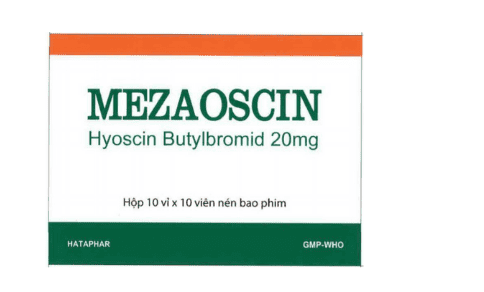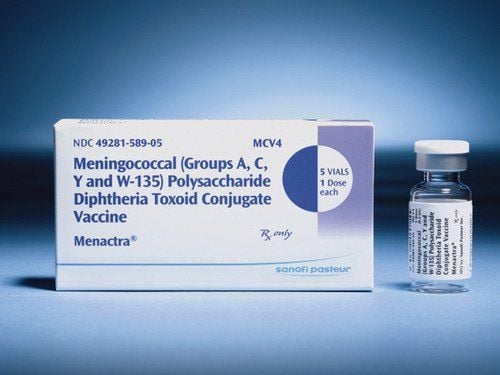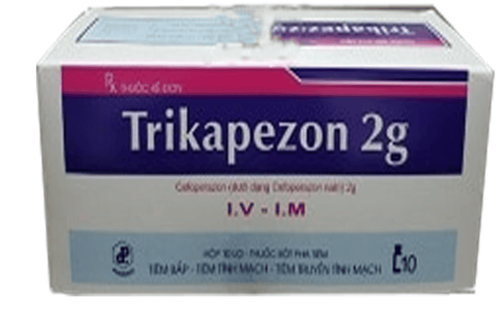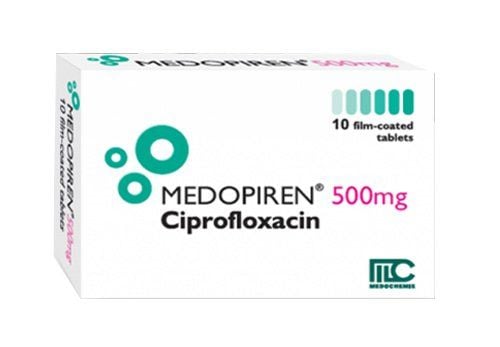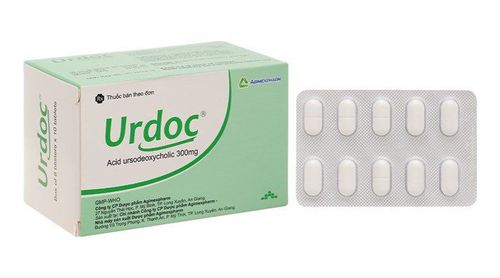This is an automatically translated article.
Nozasul is effective in the treatment of infections caused by susceptible bacteria such as respiratory tract infections (upper and lower). Adhering to the indications, the dose of Nozasul will help patients improve the effectiveness of treatment and avoid unwanted side effects.
1. What are the uses of Nozasul?
1.1. What is Nozasul? Nozasul belongs to the group of drugs used to treat parasites, infections, viruses and fungi. The drug has registration number VD-19649-13, manufactured by Farmapex Tranet Joint Venture Company Limited.
Nozasul drug includes the following ingredients:
Cefoperazone (in the form of Cefoperazone sodium) with a content of 1g; Sulbactam (as Sulbactam sodium) has a strength of 1g. The drug is prepared in the form of sterile powder for injection, box of 1 vial or 10 vials.
Nozasul is recommended for use in both children and adults.
1.2. What does Nozasul do? Nozasul drug has the composition Cefoperazone, belongs to the 3rd generation cephalosporin semi-synthetic antibiotic. Active ingredient Cefoperazone has good bactericidal effect, is used by injection and is similar to ceftazidim.
Cefoperazone is active against a broad spectrum of gram-negative bacteria, including penicillinase-producing strains of N. gonorrhoeae and most strains of Citrobacter, Enterobacter, Proteus, Providencia, Morganella, Salmonella, Shigella and Serratia spp.). In particular, Cefoperazone is also less effective against Enterobacteriaceae than other 3rd generation cephalosporins.
Sulbactam is an active substance similar in structure to beta lactams but with very weak antibacterial activity. Therefore, it is often used in combination with antibiotics in clinical practice. Used in combination with the penicillin group to broaden the spectrum of activity against beta-lactamase-producing bacteria such as enterobacteria, E.coli, Branhamella, Klebsiella, staphylococci, Neisseria, Proteus, anaerobes Bacteroides and Acinetobacter.
Nozasul medicine is prescribed by doctors in the treatment of infections caused by sensitive bacteria such as:
Respiratory tract infections (both upper and lower); Urinary tract infections (both upper and lower); Peritonitis, cholangitis , cholecystitis, other infections of the abdominal cavity; Septicemia ; Meningitis; Skin and soft tissue infections; Bone and joint infections; Pelvic infections, endometritis and other genital infections, gonorrhea . Nozasul is contraindicated in the following cases:
Patients are allergic to the main ingredient Sulbactam, Cefoperazone, Penicillin or any of the ingredients.
2. How to use Nozasul
2.1. How to take Nozasul Drug Nozasul is administered intramuscularly or intravenously. Mix 5ml of distilled water for injection for intramuscular injection, 10ml of distilled water for intravenous injection, or mix with 0.9% sodium chloride solution for intravenous infusion. Dosage of Nozasul must be prescribed by the doctor. Do not use less than or more than prescribed by your doctor. 2.2. Dosage of the drug Nozasul Adults:
Mild to moderate infections: 1 to 2g every 12 hours. Severe infections: 2 to 4g every 12 hours Children:
25 to 100 mg/kg body weight every 12 hours. Use in neonates: For infants 1 week old, the drug must be given every 12 hours. The maximum pediatric dose of Sulbactam should not exceed 80 mg/kg/day. With doses of Sulbactam/Cefoperazone required Cefoperazone > 80mg/kg/day. Patients with renal impairment: No dose reduction of Nozasul is required.
Patients with liver disease or biliary obstruction should not take more than 4g in 24 hours.
Handling when missed dose:
Nozasul medicine is taken by medical staff at medical facilities, so it is possible to limit the missed dose. If you accidentally miss a dose of Nozasul, inject it as soon as you remember, but keep in mind that the dose is 12 hours apart. Never inject a double dose of Nozasul.
Treatment of overdose:
The concentration of Nozasul antibiotics in the cerebrospinal fluid is high, which can cause side effects on the nervous system, such as seizures, so it should be carefully monitored. In case of overdose in patients with renal failure, hemodialysis should be performed to remove Cefoperazone and Sulbactam from the body. Symptoms of overdose include increased neuromuscular excitability, convulsions, especially in patients with renal impairment.
3. Note when taking Nozasul
Do not use Nozasul past the expiration date, the vial changes color, the vial loses its seal, cracks, or breaks. When a severe anaphylactic reaction is detected, the drug Nozasul should be discontinued and emergency treatment with Epinephrine should be performed immediately. If necessary, concurrently intensive resuscitation with genotoxic oxygen, intravenous steroids, and airway clearance by endotracheal intubation is required. In patients with liver disease, biliary obstruction or renal dysfunction associated with one of the above infections, the dose should be adjusted. When treating patients with renal impairment with hepatic dysfunction, serum concentrations of cefoperazone should be monitored and the dose adjusted as necessary. In these cases, when an overdose of 2g Cefoperazone/day is required, the patient's serum concentration should be closely monitored. Patients with poor diet, malabsorption (such as cystic fibrosis) and patients receiving long-term parenteral nutrition are at risk of vitamin K deficiency when using Nozasul. In these patients and in patients receiving anticoagulants, prothrombin time should be monitored and additional doses of vitamin K administered. The patient should be closely monitored during treatment to prevent overgrowth of bacterial strains. Insensitivity may occur during long-term use of Nozasul. Therefore, periodic monitoring of renal, hepatic and hematopoietic system functions is required during prolonged drug therapy. This is especially important in infants, especially premature babies and infants. As with most antibiotics, Clostridium difficile-associated diarrhea (CDAD) has been reported with the use of sulbactam sodium/cefoperazone sodium, the severity of which can range from mild diarrhea to colitis, More dangerous can lead to death. Patients should be carefully monitored even after 2 months of antibiotic therapy as Clostridium difficile diarrhea has been reported during this time. Cefoperazone and Sulbactam cross the placenta. However, there are not many adequate clinical studies in pregnant women. Nozasul should be avoided during pregnancy unless clearly needed. Only small amounts of cefoperazone and sulbactam are excreted in human milk. However, caution should still be exercised when Nozasul is administered to a nursing mother.
4. Side effects of Nozasul
In general, Nozasul is well tolerated and most side effects are mild to moderate. Nozasul side effects may include:
Digestive system: Diarrhea, nausea and vomiting. Skin System: Allergic skin reaction with erythema and urticaria. Hematopoietic system: Long-term use of Nozasul may cause reversible leukopenia, transient decrease in eosinophils, decrease in hemoglobin and red blood cells, platelets, hypoprothrombinemia, or a positive Coomb's reaction in some cases. patient. If you experience these symptoms, the patient should stop using Nozasul and notify the doctor for appropriate treatment.
5. Nozasul drug interactions
Co-administration of Nozasul with alcoholic beverages causes typical reactions such as: Headache, hot flashes, sweating, tachycardia. Do not mix Nozasul with Amino glycosides together because it will reduce the activity of the drug, causing physical incompatibility between them. When using a combination of Nozasul and aminoglycosides, it is necessary to interrupt the infusion, wash the infusion tube or change the infusion line between the two infusions. Lidocaine: Nozasul should not be mixed directly with 2% Lidocaine HCl solution because these suspensions are incompatible. If co-administration is required, nozasul must be mixed with distilled water for injection and diluted with 2% lidocaine to make a compatible solution. Care should be taken when combining Nozasul with thrombolytics, anticoagulants, and non-steroidal anti-inflammatory drugs due to the potential for bleeding. Nozasul should not be mixed with gentamicin, amikacin, kanamycin B, doxycynlin, ajmaline, diphenhydramine, meclofenoxate and potassium magnesium aspartate due to the risk of precipitation. When mixing Nozasul with Hydroxylamine hydrochloride, aminophylin, proclorperazine, procainamide, cytochrome C, aprotinin and pentazocin after 6 hours, there is a change in drug properties. When taking Nozasul for a urine glucose reaction may be false positive with Fehling's or Benedict's solution. Positive antiglobulin (Coomb) tests have been reported, in particular, in neonates whose mothers took the drug at the time of delivery. Occasionally increases in serum AST, ALT, ALP, BUN and serum creatinine have been reported. To avoid interactions, before being prescribed Nozasul, the patient should inform the doctor about the drugs they are using, including functional foods. The doctor will base on that to prescribe the appropriate Nozasul.
6. How to store Nozasul
The storage time of Nozasul medicine is 36 months from the date of manufacture Keep Nozasul medicine at a temperature not exceeding 30 degrees Celsius. Avoid light and moisture. Nozasul solution after mixing is stable for 24 hours at a temperature of 2 - 8 degrees C. Keep Nozasul out of reach of children. Above is all information about Nozasul medicine, patients need to carefully read the instructions for use, consult a doctor / pharmacist before using. Nozasul is a prescription drug, and patients should absolutely not self-treat at home because they may experience unwanted side effects.





